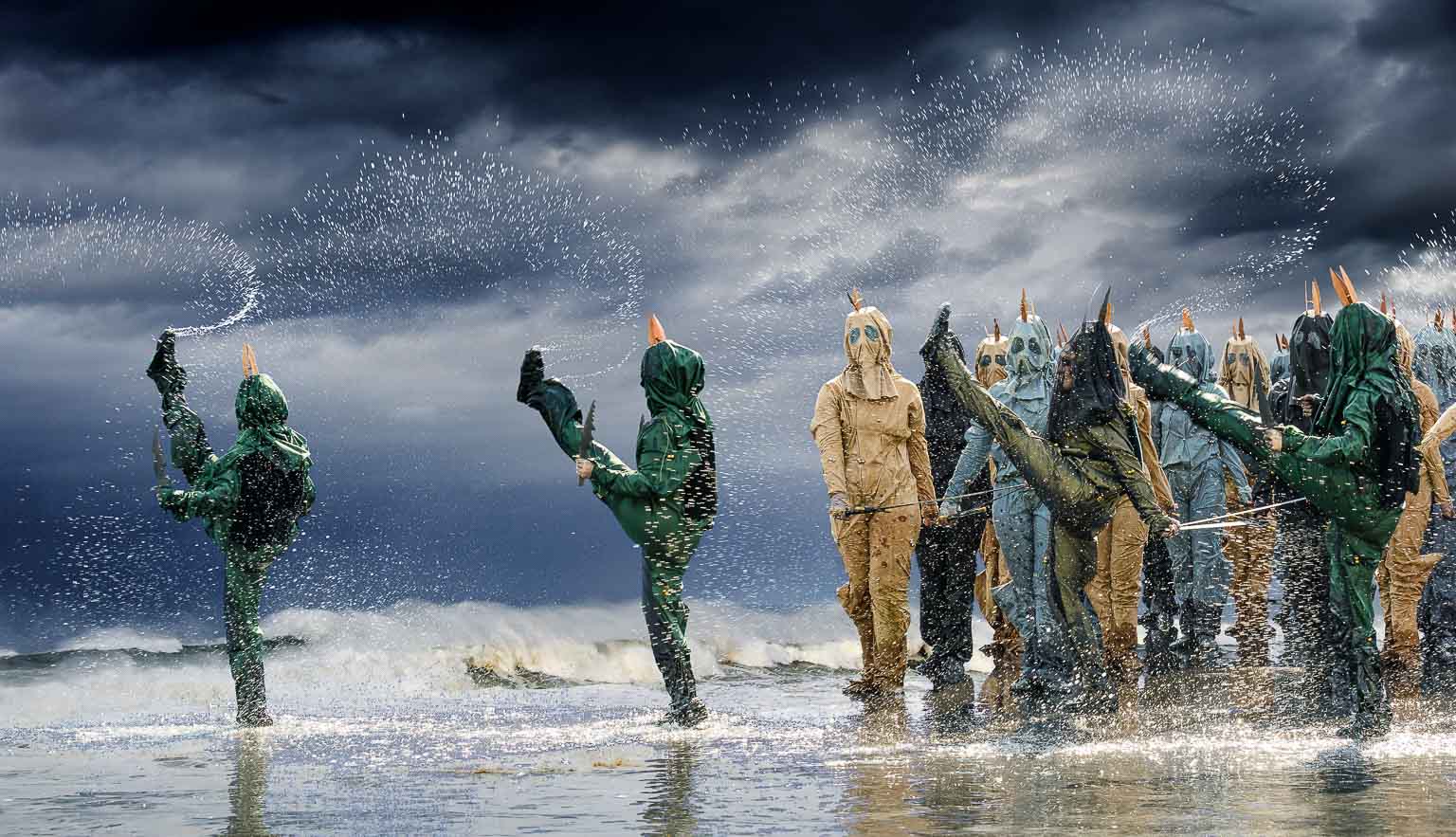Dancing in front of the cameras: a collection of photos of Dantza
- Donostia (Gipuzkoa): Exhibition room of the Photographic Society of Gipuzkoa, from January 11th through February 6th 2019.
- Tafalla (Navarre): Tafalla Cultural Centre, from February 2nd through 21st 2019.
- Zarautz (Gipuzkoa): Photomuseum, from February 12th through March 19th 2019.
- Tolosa (Gipuzkoa): Aranburu Palace, from March 22nd through April 27th 2019.
- Alkiza (Gipuzkoa): Fagus Alkiza Interpretation Centre, from May 13th through June 30th 2019.
- Oieregi (Navarre): Bertiz, from July 4th through August 25th 2019.
- Biarritz (Labourd): La Gare du Midi, from September 3rd through 16th 2019.
- Bayonne (Labourd): L'Atalante, from August 28th through September 30th 2019.
- Zarautz (Gipuzkoa): Sanz Enea, from February 6th through March 29th 2020 (within the exhibition Koldobika Jauregi "Dantza" , along with the costumes and props used in the film).
- Andoain (Gipuzkoa): Bastero Cultural Centre, from March 31st through April 30th 2021 (within the exhibition Koldobika Jauregi "Dantza" , along with the costumes and props used in the film).
- Alkiza (Gipuzkoa): Fagus Alkiza Interpretation Centre, from October 4th through 20th 2024.
- Zarautz (Gipuzkoa): Sanz Enea, from February 27th through April 6th 2025 (within the exhibition Bizitza efimeroa).
To see the pictures, click on the image above.
Dancing in front of the cameras: outline of the project
Dantza is not an ordinary film. Dantza tells us a story through dance. That story takes place in a village, in any rural village; in fact, the story could take place in any village in the world. It is also a metaphor for life and the struggle for survival, in such a way that in the development of the film the cycle runs from sowing the seed to ripening the fruit, from birth to death, at the same time that it also speaks to us about work, love and celebration.
The images presented in this exhibition have also been arranged according to the course of the story told by the film. There we have, in the first photographs, the shaman (an androgynous being: the goddess of the Sun, Amaterasu), improvising his dance in the cave in prayer of rain, imploring to the sky the water indispensable for the earth to bear its fruit. Then we see the earth awaken –as the centre of the zinta dantza, there is the tree that begins to be covered with leaves, the tree of life–; on the other hand, the abominable beings that approach it represent the plagues, mosquitoes and horseflies (ezpata dantza): after their attack, we can see the tree folded, and the fruit affected on the ground. Then comes the fire that the farmer will use to fight the plague (Bizkaiko erregelak), and then the funeral rites (irradaka), where we can appreciate the form of a cromlech symbolized by the ring of women. After the winter spring will explode, and the apple tree will dress with colorful flowers, flowers that at the end of summer will bring their fruit (sagar dantza). Later we see the fruit already collected in the press, the work, and the dance that the men perform around them (almute dantza). From the apple will come the cider, and the whole village will gather in the square, in celebration (soka dantza, galaiena, godalet dantza). Finally, we find love in the last two images (Arratiako jota).
The photographs of this exhibition have been obtained during the shooting of Dantza, a film directed by Telmo Esnal (Txintxua Films, 2018). When I was invited to take pictures in the shooting sessions, I didn't know what I was going to find, because I didn't know the world of cinema from inside and I had no idea of what situations and opportunities I would have to take photos in those sessions. But when I attended the first one, as soon as I started shooting between the chiaroscuro and the dust that the dantzaris, barefoot in front of the cameras, were lifting from the floor of the Igartubeiti farmhouse, the photographic project that I present through the exhibition began to take shape in me.
I would like to mention here a few people, insofar as they are creators of the beauty that can be appreciated in the photographs on display: to begin with, it must be said that a large part of the film's innovative choreographies were realized by the Argia group, and in this context it is worth mentioning, of course, his alma mater Juan Antonio Urbeltz, who for years has researched traditional Basque dances, research whose results are reflected in the film and in the story it tells us; on the other hand, behind the costumes and the props are the sculptor Koldobika Jauregi and the artistic director of the film, Elena Cajaraville, to whom we owe a great deal of the creation of the aesthetics we appreciate in the film; finally, I would like to mention not only the director of the film, but also the director of photography, Javier Agirre, who is also guilty of creating the images we can see in these photos.
This exhibition has had the support of the production company Txintxua Films.
January 2019.


